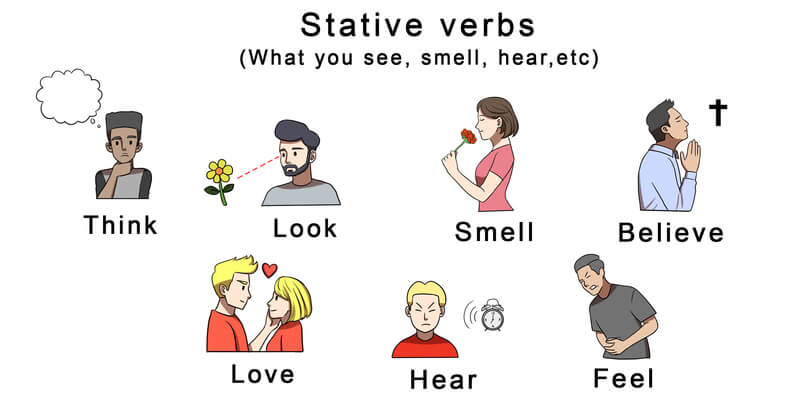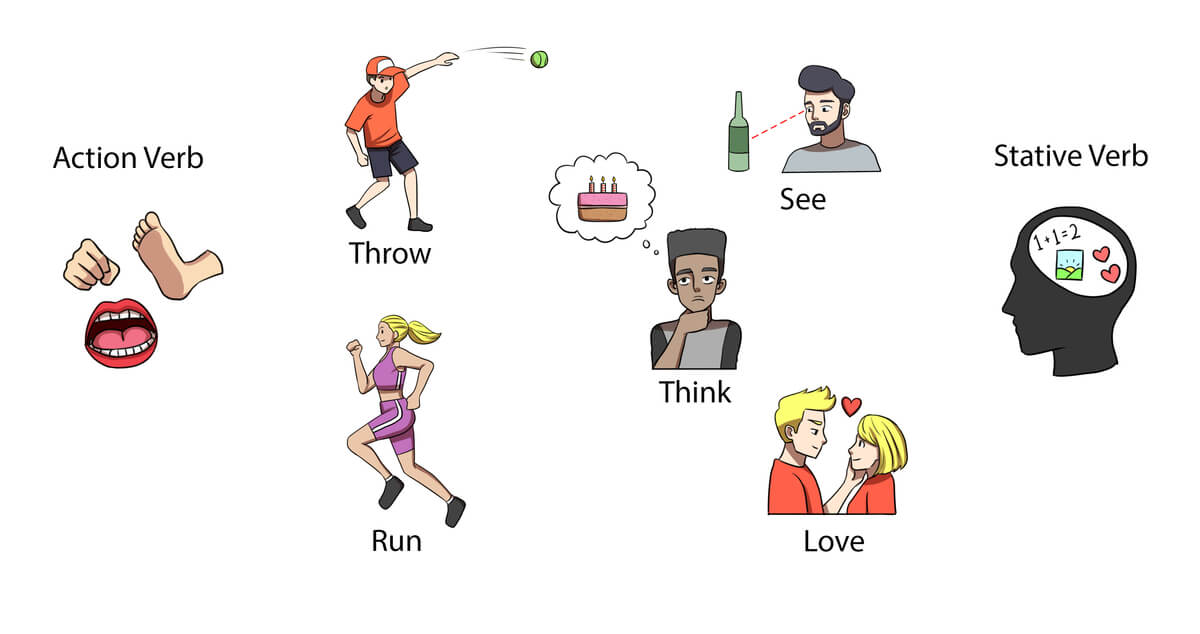Stative Verbs
- Stative verbs describe states or conditions that are static or unchanging. They do not show a physical action.
- Action verbs express an action, event, or change.
- Stative verbs are often used in the simple present tense and do not usually have continuous (-ing) forms.
Let's talk about a type of verbs called stative verbs. Understanding what they are and how they are different from action verbs is an important part of learning English.
What are Stative Verbs?
Stative verbs describe states, conditions, thoughts, feelings, and sensations. They are about what someone or something is. Normally, they do not involve any physical action.
Common stative verbs are: like, love, dislike, hate, see, feel, think, taste, hear, have, believe, smell.

Examples:
-
I love pizza.
"Love" is the stative verb (feeling).
-
He believes in ghosts.
"Believe" is the stative verb (thinking).
What are Action Verbs?
Action verbs are different from stative verbs. They express an action, event, or change.
Common action verbs are: eat, drink, take, kick, read, find, run, use, walk, get, laugh.

Examples:
-
She eats a hamburger.
"Eat" is an action verb.
-
I read a book.
"Read" is an action verb.
Stative verbs shouldn't be used in continuous tenses
Stative verbs do not usually have continuous (-ing) forms. This is because they represents a state or condition.
For example, we say "I know English", NOT "I am knowing English".
和AI英语老师一起练习这个话题
AI英语老师会教您语法,并以对话的形式和您一起练习。 另外,还有 100 多个有关该主题的练习题来巩固您的理解。
在您的手机或平板电脑上免费试用 ALULA








你对这节课有任何问题吗?请在下面的评论区提问。